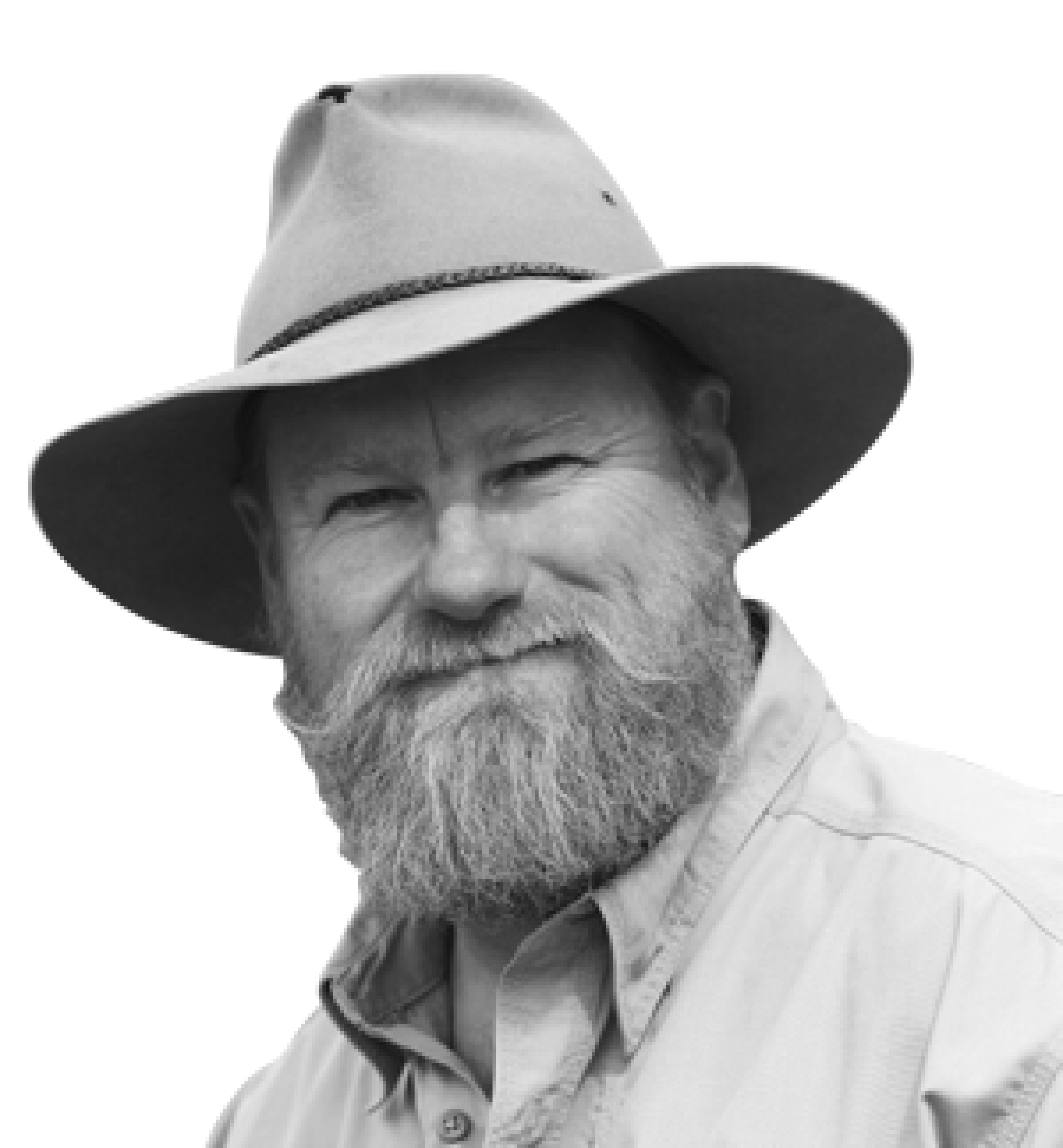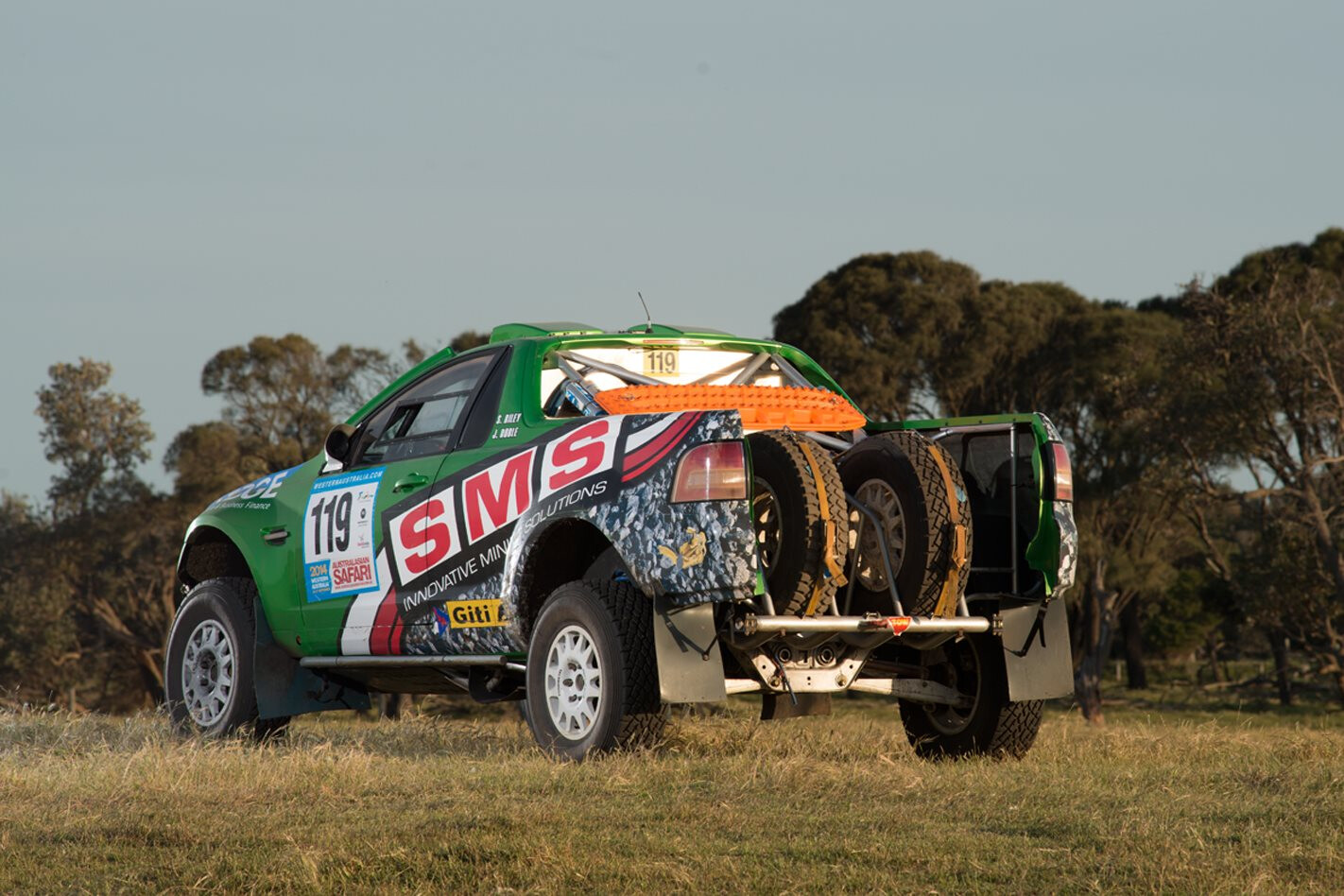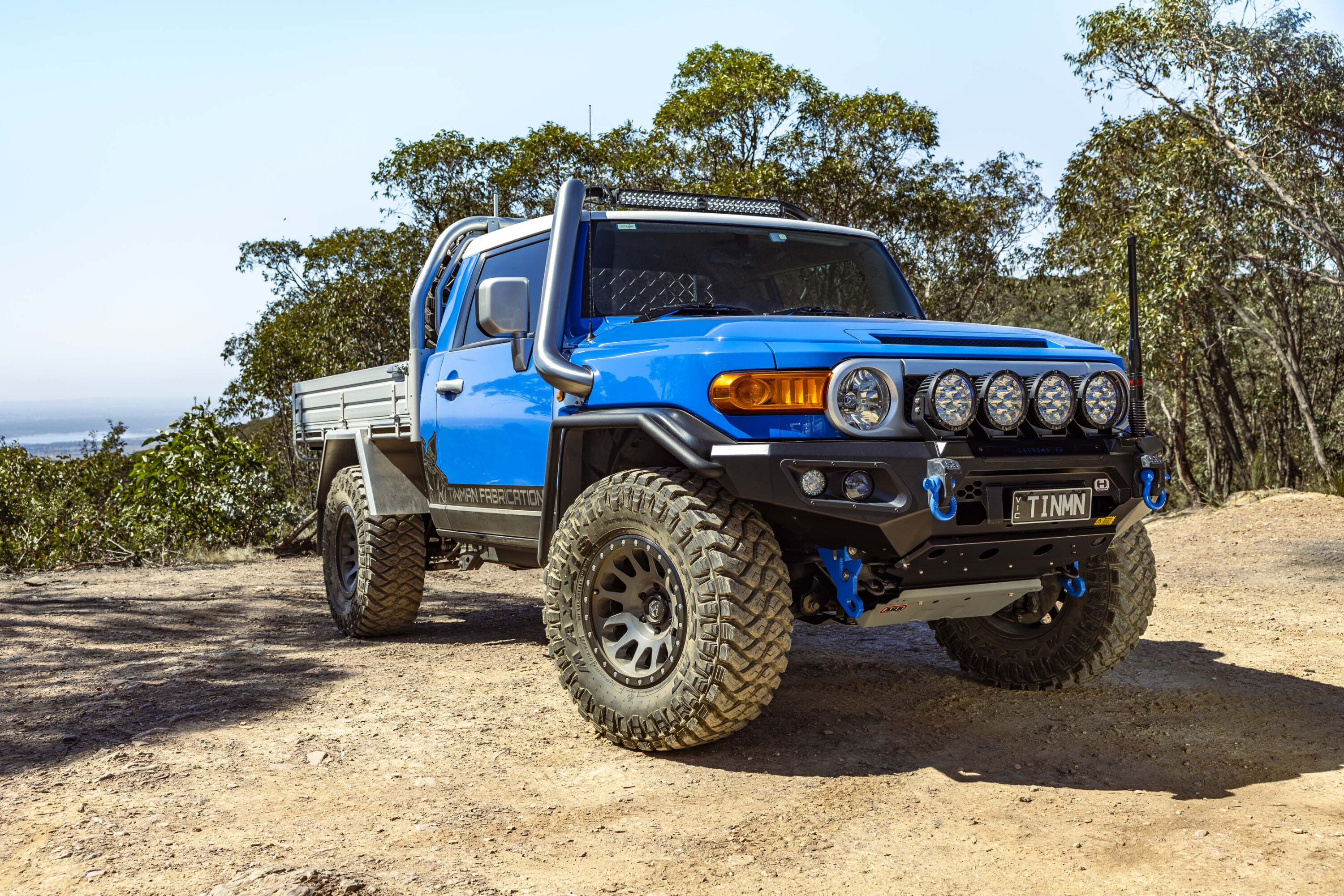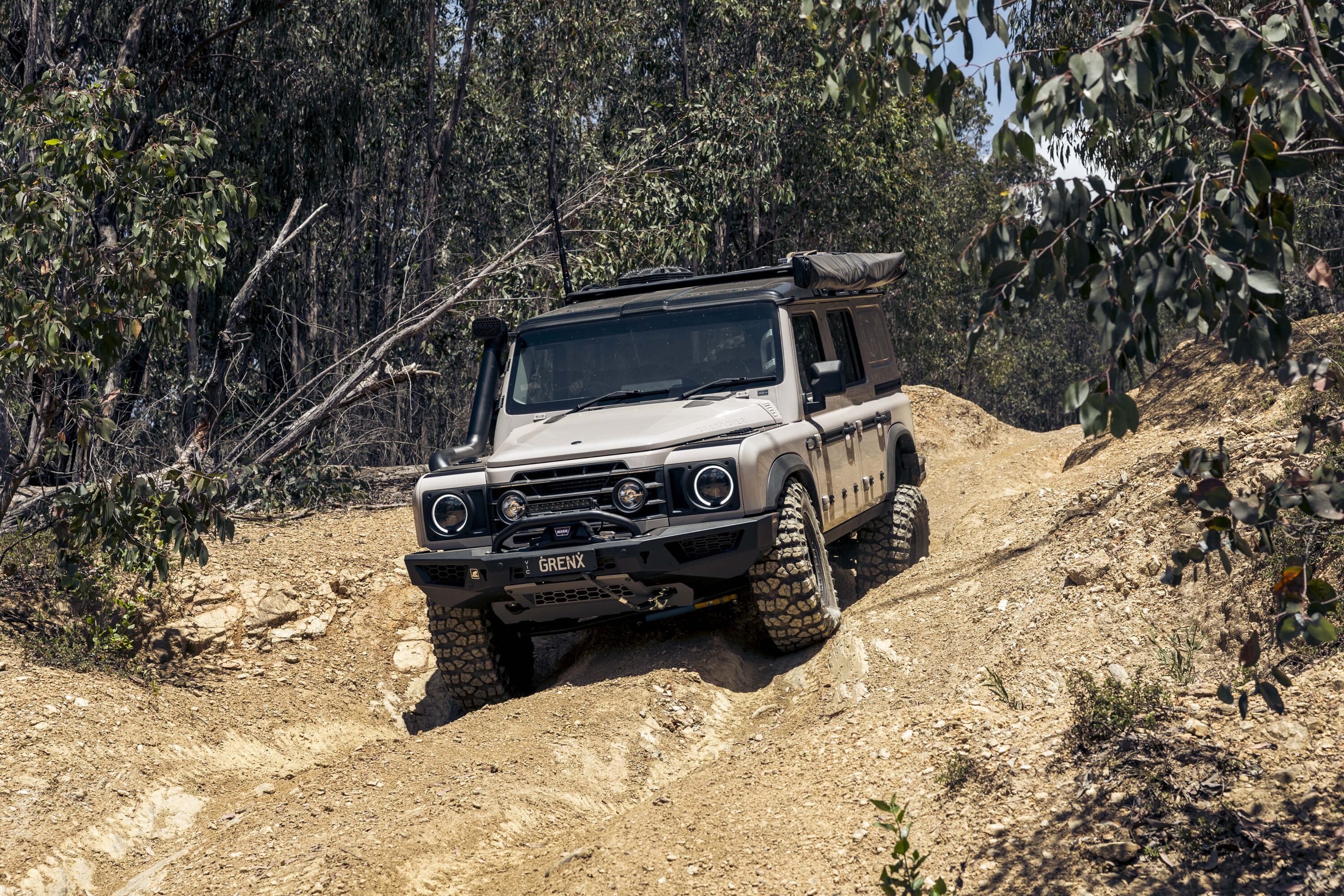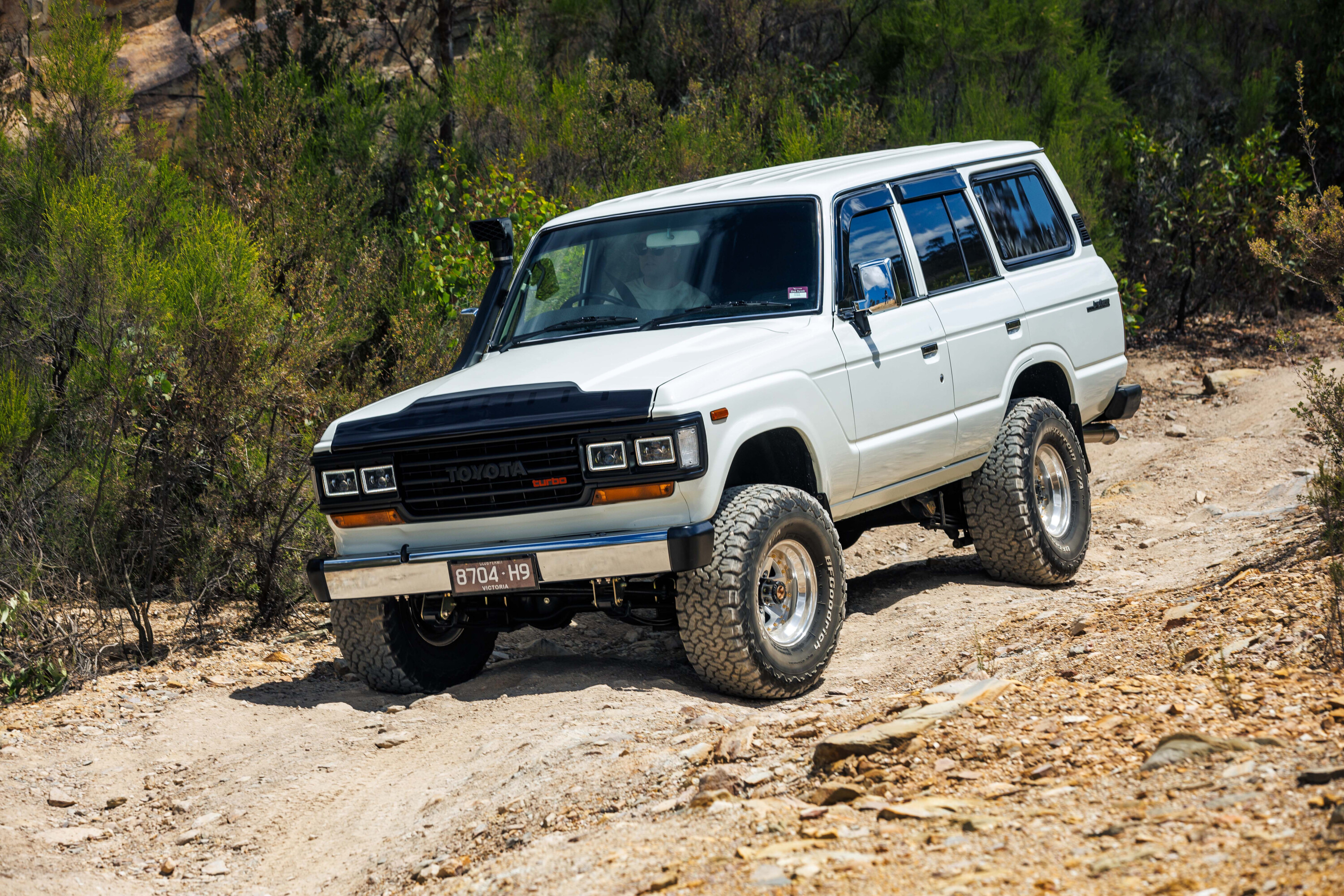The cranky-sounding V8 engine rumbles through the stripped-out and roll-caged cabin. As the sequential gear lever slams into first gear, one could be excused for thinking they were about to hit the track in a V8 Supercar. That’s because we’re firmly strapped in to a Holden Commodore that’s using a Aussie-made Holinger gearbox – the same ’box that the top-tier touring cars ran up until recently.
The 6.0-litre engine up front is based on the production LS3 GM V8 and it’s good for around 500hp (373kW), but this V8 Supercar is built for tougher tracks than Mount Panorama, Phillip Island or any other road circuit that the popular tin tops have ever taken on.
Australian Safari veteran Steve Riley built this 4WD V8 Holden ute to tackle the most demanding off-road tracks and races on the planet. It debuted at the 2014 Australasian Safari and Steve was leading for most of the event before faltering on the penultimate day to finish third overall. It’s built to full FIA specifications and Steve now has his eye on the world’s toughest motorsport event, held in South America.
“Dakar would be the ultimate goal but it requires a huge investment of both time and money. I’d also like to do some of the smaller FIA rallies like the Pharaons Rally in Egypt,” Steve says.
Steve is no stranger to tough motorsport. He says he’s lost count of how many Australian Safaris he has competed in – records show that it’s around 20 including the very first one (12 times on a motorcycle, alongside three wins in a 4×4). He has also competed in the Dakar twice, co-driving with fellow Australian’s Geoff Olholm in 2011 and Adrian Di Lallo in 2013, and finishing in both attempts – no small feat.
Both of these drivers were racing in Dakar 2015 and Steve would have loved to have been there with them. A testament to the toughness of the Dakar, neither of these teams finished the 2015 race, with Olholm ending up in hospital with a broken back.
“I learnt a lot from those rallies,” Steve says. “That first time with the Rally Raid team, the cars were unreliable and unprepared. They only had one mechanic to service the car and when you come in to camp at 3am with a broken gearbox, one mechanic isn’t enough. Luckily Geoff took his own mechanics as well so we were able to get the car to the finish.”
Steve enjoys building race cars as much as racing them, so when it came to planning a car that could take on the world’s best, he thought it might as well be Australian. And what’s more Australian than a Holden ute home-built in a farm shed in Victoria? Steve’s a dairy farmer and did all the design and construction on this world-class racer himself.
“Everyone has Japanese or European rally cars, I wanted to build something Australian. The ute creates a lot of interest and I wanted a ute as it’s easier to work on [than a wagon] and has less body panels.”
The ute retains much of the body style that it left the Holden factory with – the cabin and doors are original steel but the front and rear panels are replicated in a lightweight composite material. The shell conceals a tube chassis that incorporates a roll-cage and uses a pair of King competition shocks at each corner. The coil-overs are the same length all around so one spare fits all corners, in the same way that the fabricated wishbones are the same on the left and right hand sides.
The drivetrain starts with the 6.0-litre V8 engine which has been kept simple for reliability and only benefits from a hotter camshaft than standard and some mild headwork. Likewise, the Hollinger ’box was chosen for durability having proven its strength in the previous generation V8 Supercars.
While all-wheel-drive Holden utes were available in earlier models, the VE series never had this feature. The race car’s 4WD transfer case comes from a Pajero and offers full-time, part-time and 4WD low range selection. The diffs too are from Mitsubishi and are mounted high in the chassis for ground clearance. Steve reckons this drivetrain is well proven in high horsepower cross-country rally vehicles. Similar combinations could also be found under a handful of cars at the most recent Safari.
A benefit of the Mitsubishi transfer case is its ability to run in all-wheel drive while still having a differential. Steve runs it in this full-time 4WD mode for most of the racing, only locking the centre diff if the going gets real tough.
This is a high speed 4WD sport after all – quite a contrast to rock crawling and scenic touring.
DRIVE TIME
Despite being a purpose-built cross-country rally car, the ute can be an easy car to drive. Still wearing its battle scars from the 2014 Safari in Western Australia, we got to sample the beast on a private track in Victoria. After a quick lap of the paddock with Steve, to show us the way around, he let us take it for a spin.Aside from the sequential shift of the gearbox, driving this car is as simple as any other V8 ute. Select first gear, bring up the revs, let the clutch out and off you go. It puts out a raucous sound as the engine barks and stones flick up in to the unprotected wheel arches.
The shove in the back and roar of the V8 leaves no doubt this ute has some serious performance available. The King suspension soaks up bumps and holes in the track that would otherwise slow a production 4WD to a crawl. The grunt really shows its value when the track narrows and winds through the scrub – the ute leaps out of corners and bounds for the next one before the massive AP Racing brakes slow it down again.
Our drive of Steve’s ute came shortly after we competed in the Australian Safari behind the wheel of the production class Jeep Rubicon. The two vehicles are worlds apart. The corner-to-corner blast of acceleration of Steve’s ute was the real revelation of the ute’s performance potential. Well, that and knowing that Steve was hurtling along the fence lines in Western Australia at upwards of 170km/h, whereas our Jeep was bouncing along at half the pace. This unlimited Holden is nothing like our production-spec vehicle!
We even approached a hump in the track, where Steve had been getting some air for the cameras, and kept the boot buried in an attempt to do the same. Even without the speed Steve was carrying, the ute cleared the rise and the long travel suspension soaked up the landing like it wasn’t there. After seeing the way the car landed sideways on Steve’s earlier jumps, we were content to take it slower and have a smoother landing.
While the ute is relatively straightforward to drive, it still needs to be man-handled. It likes direct steering inputs; at the first sharp right-hander we ran wide into the scrub. A more aggressive turn-in is needed to get the nose pointed, then it’s back hard on the gas to wag the tail and shoot rooster tails of sand up from the rally tyres before blasting to the next corner to do it all again. While it’s a thrilling experience over this short blast, keeping up the pace over five days at an event like the Safari – or the two weeks of the Dakar – would be something else again.
With no sponsor stepping up to back a Dakar bid at this point, and no Australian Safari being run in 2015, Steve was prepping the car for something different as we went to print. “We’re going to lower the car and give it a bit more horsepower and take it to the Race to the Sky in New Zealand,” he told us with a hint of excitement. And the ute will be exciting, with a 900hp (671kW) supercharged 7.0-litre engine being built specifically for the unique hill climb on NZ’s South Island in April.
Like the Dakar, the Race to the Sky attracts the best racers from around the world and Steve finished second there in a previous attempt driving a home-made buggy. The supercharged V8 ute should add a distinct Australian flavour to the race in 2015 and will be a sight and sound to behold.
Get the latest info on all things 4X4 Australia by signing up to our newsletter.

